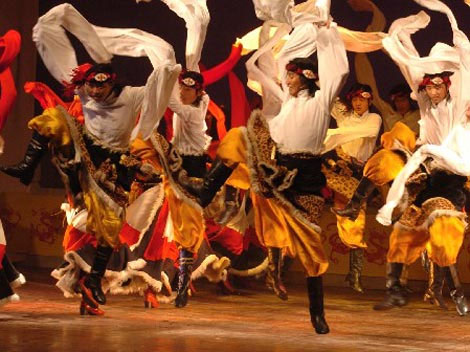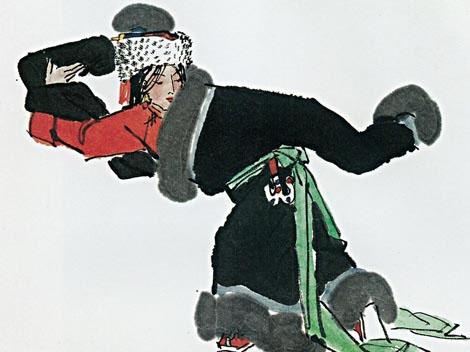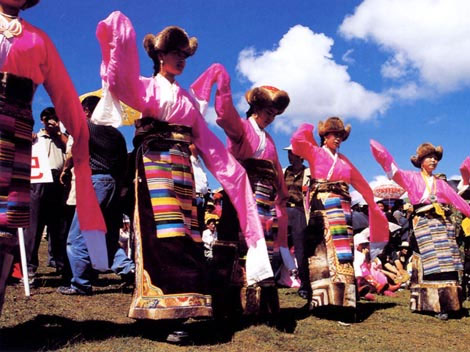The Qinghai-Tibet Plateau, known as "the roof of the world", is filled with far-stretching mountains, lofty icy peaks and precipitous deep valleys. The Himalayas, the world's highest peak Everest, Gangdisi Mountains and the Buddhism sacred "Gangrenboqi" Peak are all found here. The mysterious plateau atmosphere helps bring forth people's pious religious belief.



Yishunbian (Hand and Foot Moving in the Same Way) requires the dancers extend their left (or right) hands and left (or right) feet at the same time. This step was formed under the special circumstances of the plateau where the lack of oxygen is serious and the road is rugged. When a person walks with a heavy load, he or she has to lean to one side, so the foot on that side will provide support. Naturally, the arm on the same side is similarly swung for balance. Since such a step saves a lot of effort and reduces danger, it is commonly used by people and is gradually elevated to a kind of dance. Another factor leading to the birth of such a dance is the different clothes and laboring tools used by plateau people. The dances of Dai and Miao people living on the Yunnan-Guizhou Plateau have the same features.





